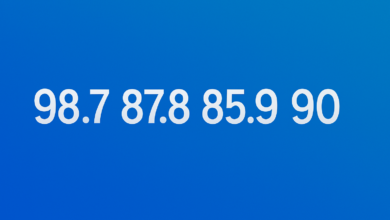Inventory Optimization Software: Streamline Your Supply Chain

Balancing the chaos of fluctuating demand with the precision of inventory optimization software can transform your supply chain operations. By utilizing real-time data integration and advanced algorithms, you’ll achieve more accurate demand forecasting and reduce emergency replenishment costs. Imagine having a system that not only enhances efficiency but also boosts customer satisfaction through timely deliveries. However, implementing such a tool isn’t without its challenges, and understanding the key features and benefits is essential. So, how can you ensure a seamless integration that maximizes these advantages?
Key Features
When evaluating inventory optimization software, several key features stand out as essential for effective management.
First, you need robust demand forecasting capabilities. Accurate demand forecasting ensures that you’re stocking the right products in the right quantities, minimizing both stockouts and overstock situations. Look for software that uses advanced algorithms to analyze historical data and market trends, giving you precise predictions.
Next, consider the performance metrics the software provides. Effective inventory optimization software should offer comprehensive performance metrics that allow you to track key indicators such as inventory turnover, order accuracy, and carrying costs. These metrics are crucial for making informed decisions and identifying areas for improvement.
Additionally, real-time data integration is a must-have feature. This ensures that your inventory levels, sales, and supply chain information are always up-to-date, allowing for quick adjustments to changing conditions. The software should seamlessly integrate with your existing systems to provide a holistic view of your inventory situation.
Lastly, user-friendly interfaces and customizable dashboards can significantly enhance your ability to monitor these key features. They provide an intuitive way to access and interpret complex data, leading to more strategic management of your inventory.
Benefits
How can leveraging inventory optimization software transform your business operations? By integrating this advanced tool, you can achieve significant cost savings and increased efficiency. The software meticulously analyzes your inventory levels, demand patterns, and supply chain performance. This enables you to minimize excess stock and reduce holding costs, directly contributing to your bottom line.
Moreover, increased efficiency is another critical benefit. With real-time data and automated processes, you can streamline inventory management tasks that would otherwise consume valuable time and resources. The software’s ability to predict demand more accurately ensures that you maintain optimal stock levels, preventing both overstocking and stockouts. This balance not only enhances customer satisfaction but also reduces the costs associated with emergency replenishments.
Additionally, inventory optimization software provides actionable insights through detailed analytics and reporting. This empowers you to make informed, strategic decisions that align with your business goals. By identifying trends and potential disruptions, you can proactively adjust your inventory strategies, ensuring a resilient and responsive supply chain.
Types of Solutions
Inventory optimization software comes in various types, each designed to address specific business needs and operational challenges.
First, demand forecasting solutions use historical data and advanced algorithms to predict future inventory needs. By accurately anticipating customer demand, you can minimize stockouts and overstock situations, keeping your inventory levels balanced and costs under control.
Another category is inventory tracking software. This type of solution provides real-time visibility into your stock levels across multiple locations. With automated tracking, you can quickly identify discrepancies, reduce human error, and ensure that your inventory records are always up-to-date. This is particularly beneficial for businesses with complex supply chains, where accurate tracking is crucial for maintaining operational efficiency.
Integrated inventory management systems combine demand forecasting and inventory tracking, offering a comprehensive approach to inventory optimization. These platforms often include features like automated reordering, supplier management, and performance analytics. By using an integrated system, you can streamline your entire supply chain process, making it more responsive and agile.
Choosing the right type of inventory optimization software depends on your specific needs, such as the size of your business, the complexity of your supply chain, and your strategic goals. Each solution has its unique strengths, so it’s essential to align the software capabilities with your operational requirements.
Implementation Steps
Successfully deploying inventory optimization software requires a well-structured implementation plan that ensures seamless integration with your existing systems. First, conduct a comprehensive needs assessment to identify key functionalities and align them with your organizational goals. This sets a clear roadmap for the implementation process.
Next, establish training requirements for your team. Effective training is crucial; it ensures that your staff can utilize the software’s features optimally. Develop a detailed training schedule that covers all aspects of the software, from basic navigation to advanced analytics. This minimizes downtime and accelerates the software’s adoption.
Simultaneously, define performance metrics to measure the software’s impact. Key metrics might include inventory turnover rates, order accuracy, and stockout frequency. By continuously monitoring these metrics, you can assess the software’s effectiveness and make data-driven adjustments as needed.
Integration follows, ensuring the new software harmonizes with existing systems like ERP and CRM platforms. This step often involves robust data migration and API configurations.
Common Challenges
Implementing inventory optimization software often comes with several challenges that can impede its success. One significant hurdle is the accuracy of demand forecasting. If your forecasts are off, you might end up with either excess inventory or stockouts, both of which can be costly. Accurate demand forecasting requires high-quality data, and any gaps or inaccuracies in this data can severely impact your software’s performance.
Another common challenge is the integration of inventory tracking systems. Many businesses have legacy systems that don’t seamlessly integrate with new optimization software. This can lead to inconsistencies in inventory data, making it difficult to maintain real-time visibility. Without accurate inventory tracking, your optimization efforts can fall short, resulting in inefficiencies and increased operational costs.
Additionally, resistance to change within your organization can be a barrier. Employees accustomed to traditional methods may be reluctant to adopt new systems, leading to suboptimal utilization of the software. Training and change management strategies are essential to overcome this resistance.
Lastly, the complexity of the software itself can be daunting. If the software isn’t user-friendly, it can complicate processes rather than streamline them, negating the benefits of inventory optimization. Addressing these challenges strategically can help you fully realize the advantages of your inventory optimization software.
Future Trends
While overcoming implementation challenges is critical, it’s equally important to keep an eye on future trends that will shape the landscape of inventory optimization software. Technology advancements are driving this transformation, particularly through the integration of artificial intelligence and machine learning. These tools will enable you to predict demand more accurately, streamline operations, and reduce waste, aligning with industry innovation.
Market demands are evolving rapidly, and consumers now expect faster delivery times and greater product availability. To meet these expectations, you’ll need to adopt real-time data analytics and automated decision-making processes. This won’t only enhance your responsiveness but also improve customer satisfaction.
Sustainability initiatives are another crucial trend. As environmental concerns grow, you’ll find that optimizing inventory to minimize excess stock and reduce carbon footprints becomes a competitive advantage. Implementing sustainable practices within your supply chain can’t only boost your brand’s reputation but can also lead to cost savings in the long run.
Strategically planning for these trends will position your business to leverage new opportunities and overcome emerging challenges. Staying ahead of the curve in inventory optimization isn’t just smart; it’s essential for future success.
Conclusion
Implementing inventory optimization software is like having a crystal ball for your supply chain. You’ll gain actionable insights that drive smart decisions, cut costs, and boost efficiency. While the journey involves overcoming challenges, the payoff is immense—elevated customer satisfaction and a competitive edge. Stay strategic, leverage real-time data, and you’ll see your supply chain operations transform dramatically, positioning your business for sustained success in a dynamic market landscape.



